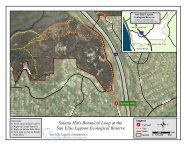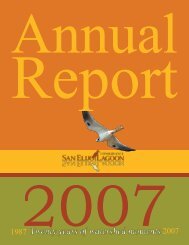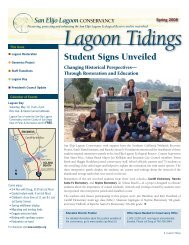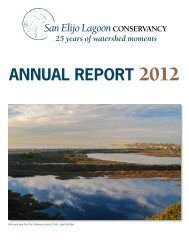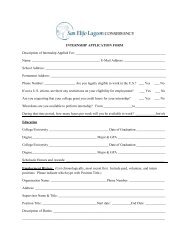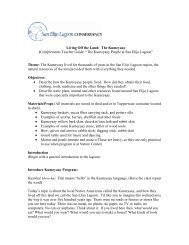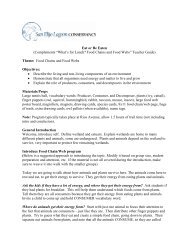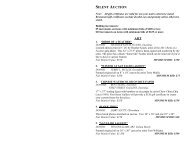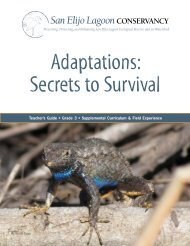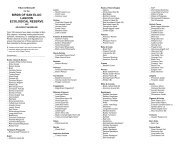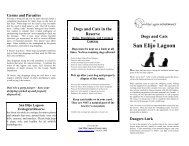Food Chains and Food Webs - San Elijo Lagoon Conservancy
Food Chains and Food Webs - San Elijo Lagoon Conservancy
Food Chains and Food Webs - San Elijo Lagoon Conservancy
You also want an ePaper? Increase the reach of your titles
YUMPU automatically turns print PDFs into web optimized ePapers that Google loves.
TEACHER OVERVIEW continued<br />
Introduction<br />
Where Do You Get Your Energy?<br />
What did you (or your students) have for breakfast today? Was it cereal <strong>and</strong> milk, or bacon <strong>and</strong><br />
eggs, or eggs with tortillas <strong>and</strong> salsa (huevos rancheros)? Why is eating breakfast, or any meal,<br />
important? We eat food for the energy it provides to get us through the day.<br />
Breakfast, or any meal or snack, is part of an energy transfer chain called a food chain. A good<br />
way to underst<strong>and</strong> a food chain <strong>and</strong> how energy gets transferred is to show one. This is an<br />
illustration of a human breakfast food chain.<br />
<strong>Food</strong> Chain<br />
energy from the sun<br />
(along with water <strong>and</strong><br />
nutrients for photosynthesis)<br />
consumer<br />
you & me<br />
cereal<br />
producer<br />
plant (corn)<br />
huevos rancheros<br />
consumer<br />
animals (chicken)<br />
<strong>San</strong> <strong>Elijo</strong> <strong>Lagoon</strong> <strong>Conservancy</strong> | <strong>Food</strong> <strong>Chains</strong> & <strong>Food</strong> <strong>Webs</strong> Teacher’s Guide | Page 3



